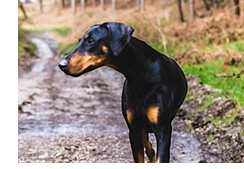
Snakes usually hibernate during the cooler months of the year, so the arrival of the spring warmth also means snakes may start to be more active in the area, and could be a potential risk to your pet.
Prevention
Make sure to cut long grass around your property, especially if you live near areas of bushland or waterways. It can also be useful to do an outdoor spring clean and reduce any potential hiding places for snakes near your property, such as wood piles or junk heaps.
Snakes are more likely to bite pets when they are disturbed. So keep your pet on a leash when walking near areas of bushland, long grass and waterways. Cats and dogs can often be bitten on the face or limbs if they disturb a snake or are trying to catch it.
Signs of snake bite:
- Salivation
- Dilated pupils
- Rapid breathing
- Vomiting
- Hind limb weakness
- Lethargy or collapse
If you notice your pet acting strangely, or displaying any of these signs, it is crucial to seek veterinary attention immediately – snake bites in pets are an emergency, and require urgent treatment and care. If possible, take a photo of the snake or note its colour if you see it. Keep your pet calm and phone ahead to alert the clinic that you are on your way.
We will examine your pet and may suggest a range of diagnostic tests and treatments, including the use of snake antivenom to treat the snake bite in your pet. Snake bites can be fatal, which is why being careful about where your pets explore during snake season is so important.
If you live on a property where there have been known to be lots of snakes around, it is also possible to undertake snake avoidance training for your dog.
If you are unfamiliar with exercising your dog in a particular area, you can always speak to Pet Doctors’ team for further advice about areas to avoid where there may have been snakes seen previously.

